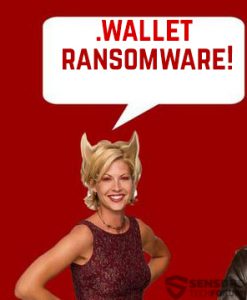 If you have been infected by the Dharma virus, this article aims to help you remove it and try to restore the .wallet files for free.
If you have been infected by the Dharma virus, this article aims to help you remove it and try to restore the .wallet files for free.
Dharma ransomware which was latter established to be a variant of the CrySiS ransomware family has come up with yet another .wallet file extension. The Dharma virus encrypts the files on the computer which it infects by likely using the AES (Advanced Encryption Algorithm) after which holds the encrypted files hostage. It also leaves behind a ransom note in a .txt and .jpg files that demands from the victim to pay a hefty “fee” to get the files back. In case you have become victim of the Dharma ransomware virus, we suggest that you read this article to learn how to remove Dharma and try to restore your files.
→Related: Decrypt .wallet Encrypted Files for Free (Dharma Update 2017)

Threat Summary
| Name |
Dharma |
| Type | Ransomware |
| Short Description | Dharma encrypts user files and leaves as contact e-mail addresses to contact the criminals behind it and pay the ransom fee. |
| Symptoms | Changes file extension of encrypted files to .wallet. Changes wallpaper to one with ransom instructions that have the backup ransom e-mail – amagnus@india.com |
| Distribution Method | Via an Exploit kit, Dll file attack, malicious JavaScript or a drive-by download of the malware itself in an obfuscated manner. |
| Detection Tool |
See If Your System Has Been Affected by malware
Download
Malware Removal Tool
|
| User Experience | Join our forum to Discuss Dharma. |
| Data Recovery Tool | Windows Data Recovery by Stellar Phoenix Notice! This product scans your drive sectors to recover lost files and it may not recover 100% of the encrypted files, but only few of them, depending on the situation and whether or not you have reformatted your drive. |

Update May 2017 – New Data Recovery Method
Update May 2017. Our research indicates that this .wallet file virus continues to infect users in May 2017. In addition, there is a new ransomware infection, which uses the .wallet file extension. This new .Wallet infection encrypts the files by using the AES and RSA encryption algorithm. The ransom note is named #_Restoring_files_#.txt.
It has been brought to our attention that victims of the latest Dharma .wallet ransomware infection variants have managed to restore a very high percentage (over 90%) of their files using a very unique method – converting files into virtual drives and then using partition recovery option on data recovery programs. This method takes advantage of the converting the files into a .VHD file type which is a virtual drive. Since there are new data recovery programs specifically designed to recover partitions, one approach is to restore files encyrpted by Dharma ransomware is to convert the encrypted files into .VHD files and then try to recover them using partition recovery software. Since the algorithm that encrypts files actually alters only a small portion of the file, you have a much higher chance of recovering the files if you change them into .VHD type.
The methods have been reported to not be a full guarantee to recover all the files, but if you haven’t reinstalled your operating system yet, we advise you to follow them. But first, make sure to remove Dharma’s malicious files from the instructions at the bottom of these article. Here are the instructions:

Which Techniques Dharma Virus Uses to Spread and Infect
In order to cause a successful infection, the Dharma’s .wallet variant may utilize a mixture of tools to obfuscate the malware, such as:
- Program obfuscators.
- Exploit kit.
- File Joiners.
- Infection URLs.
- Malicious JavaScripts.
- A Database of distribution sites.
- Spamming services or spam bots.
The combination of those tools may spread Dharma ransomware in different places over the web, such as:
- Social media websites.
- Spam messages on e-mails.
- Messages on messaging services and communication programs(Skype, for example).
- Fake files uploaded on torrent websites as fake game key generators or cracks and patch-fixes.
The activation of either a malicious URL or a file leads to the devastating infection with Dharma ransomware, which makes the virus perform malicious script injection in legitimate Windows processes or services, such as sysdm.cpl or svchost.exe.

Dharma Ransomware – What Happens After Infection
After being infected by Dharma ransomware, the virus begins to perform several different tasks. For starters, it may initially create multiple objects in the Windows Registry editor. Those objects may make the ransomware virus run automatically on Windows startup and furthermore execute it’s files which it has created every time Windows boots up. Amongst the affected Windows registry entries may be the Run and RunOnce registry keys.
And when it comes to the files it creates, Dharma ransomware may create multiple files in the %Temp% and %AppData% folders. But it also may drop it’s ransom note files, which researchers claim to be named as the following:
- Readme.txt
- Readme.jpg
Furthermore, Dharma ransomware may modify the registry key for the Desktop of the computer to change the wallpaper of the affected machine to Dharma’s ransom note.
Although not confirmed, the ransom note of the virus may be similar to the other version of Dharma:
“//hallo, our dear friend!
//looks like you have some troubles with your security.
//all your files are now encrypted.
//using third-party recovering software will corrupt your data.
//you have only one way to get them back safely – using our decryption tool.
//to get original decryption tool contact us with email. In subject like write your ID, which you can find in name of every crypted file, also attach to email 3 crypted files.
lavandos@dr.com
//it is in your interest to respond as soon as pissible to ensure the restoration of your files, because we won’t keep your decryption keys at our servers more than 72 hours in interest of our security.
//P.S. only in case you don’t receive a response from the first email address within 24 hours, please use this alternative email address.
amagnus@india.com”
In addition to this, this variant of Dharma also takes a similar approach to CrySiS XTBL when it comes to the structure of the files after encryption. They again contain the e-mail address requested for contact but they also have the unique for Dharma .wallet extension. Files encrypted by Dharma may look like the following:
After Dharma has already encrypted the files, they can no longer be opened. Their code is altered using a unique encryption algorithm.

Dharma Ransomware – Conclusion, Removal and File Restoration
Ransomware like Dharma has once proven that it can be fixed and patched to become more difficult to decrypt and for this to happen the cyber-criminals most likely have invested a lot. It is believed that the same people who are behind the notorious Shade .XTBL ransomware have managed to make a profit by simply releasing too many variants for malware researchers to track. This resulted in a lot of people paying the ransom instead of decrypting their files for free. One theory is that these money were used to create the modified version of Shade – Dharma which is currently non-decryptable.
Despite all, it is strongly advisable that you avoid paying the ransom at all costs. Malware researchers are constantly monitoring Dharma and we will update this article with free decryption instructions, just like we did with it’s previous version. In the meantime we advise you to perform the following if infected by Dharma:
1. Backup the encrypted files and create several copies of them.
2. Remove Dharma, preferably by following the instructions below.
3. Focus on trying to restore the files using alternative methods, like the ones we have suggested below in step “2. Restore files encrypted by Dharma”.
- Step 1
- Step 2
- Step 3
- Step 4
- Step 5
Step 1: Scan for Dharma with SpyHunter Anti-Malware Tool



Ransomware Automatic Removal - Video Guide
Step 2: Uninstall Dharma and related malware from Windows
Here is a method in few easy steps that should be able to uninstall most programs. No matter if you are using Windows 10, 8, 7, Vista or XP, those steps will get the job done. Dragging the program or its folder to the recycle bin can be a very bad decision. If you do that, bits and pieces of the program are left behind, and that can lead to unstable work of your PC, errors with the file type associations and other unpleasant activities. The proper way to get a program off your computer is to Uninstall it. To do that:


 Follow the instructions above and you will successfully delete most unwanted and malicious programs.
Follow the instructions above and you will successfully delete most unwanted and malicious programs.
Step 3: Clean any registries, created by Dharma on your computer.
The usually targeted registries of Windows machines are the following:
- HKEY_LOCAL_MACHINE\Software\Microsoft\Windows\CurrentVersion\Run
- HKEY_CURRENT_USER\Software\Microsoft\Windows\CurrentVersion\Run
- HKEY_LOCAL_MACHINE\Software\Microsoft\Windows\CurrentVersion\RunOnce
- HKEY_CURRENT_USER\Software\Microsoft\Windows\CurrentVersion\RunOnce
You can access them by opening the Windows registry editor and deleting any values, created by Dharma there. This can happen by following the steps underneath:


 Tip: To find a virus-created value, you can right-click on it and click "Modify" to see which file it is set to run. If this is the virus file location, remove the value.
Tip: To find a virus-created value, you can right-click on it and click "Modify" to see which file it is set to run. If this is the virus file location, remove the value.
Before starting "Step 4", please boot back into Normal mode, in case you are currently in Safe Mode.
This will enable you to install and use SpyHunter 5 successfully.
Step 4: Boot Your PC In Safe Mode to isolate and remove Dharma





Step 5: Try to Restore Files Encrypted by Dharma.
Method 1: Use STOP Decrypter by Emsisoft.
Not all variants of this ransomware can be decrypted for free, but we have added the decryptor used by researchers that is often updated with the variants which become eventually decrypted. You can try and decrypt your files using the instructions below, but if they do not work, then unfortunately your variant of the ransomware virus is not decryptable.
Follow the instructions below to use the Emsisoft decrypter and decrypt your files for free. You can download the Emsisoft decryption tool linked here and then follow the steps provided below:
1 Right-click on the decrypter and click on Run as Administrator as shown below:

2. Agree with the license terms:

3. Click on "Add Folder" and then add the folders where you want files decrypted as shown underneath:

4. Click on "Decrypt" and wait for your files to be decoded.

Note: Credit for the decryptor goes to Emsisoft researchers who have made the breakthrough with this virus.
Method 2: Use data recovery software
Ransomware infections and Dharma aim to encrypt your files using an encryption algorithm which may be very difficult to decrypt. This is why we have suggested a data recovery method that may help you go around direct decryption and try to restore your files. Bear in mind that this method may not be 100% effective but may also help you a little or a lot in different situations.
Simply click on the link and on the website menus on the top, choose Data Recovery - Data Recovery Wizard for Windows or Mac (depending on your OS), and then download and run the tool.
Dharma-FAQ
What is Dharma Ransomware?
Dharma is a ransomware infection - the malicious software that enters your computer silently and blocks either access to the computer itself or encrypt your files.
Many ransomware viruses use sophisticated encryption algorithms to make your files inaccessible. The goal of ransomware infections is to demand that you pay a ransom payment to get access to your files back.
What Does Dharma Ransomware Do?
Ransomware in general is a malicious software that is designed to block access to your computer or files until a ransom is paid.
Ransomware viruses can also damage your system, corrupt data and delete files, resulting in the permanent loss of important files.
How Does Dharma Infect?
Via several ways.Dharma Ransomware infects computers by being sent via phishing emails, containing virus attachment. This attachment is usually masked as an important document, like an invoice, bank document or even a plane ticket and it looks very convincing to users.
Another way you may become a victim of Dharma is if you download a fake installer, crack or patch from a low reputation website or if you click on a virus link. Many users report getting a ransomware infection by downloading torrents.
How to Open .Dharma files?
You can't without a decryptor. At this point, the .Dharma files are encrypted. You can only open them once they are decrypted using a specific decryption key for the particular algorithm.
What to Do If a Decryptor Does Not Work?
Do not panic, and backup the files. If a decryptor did not decrypt your .Dharma files successfully, then do not despair, because this virus is still new.
Can I Restore ".Dharma" Files?
Yes, sometimes files can be restored. We have suggested several file recovery methods that could work if you want to restore .Dharma files.
These methods are in no way 100% guaranteed that you will be able to get your files back. But if you have a backup, your chances of success are much greater.
How To Get Rid of Dharma Virus?
The safest way and the most efficient one for the removal of this ransomware infection is the use a professional anti-malware program.
It will scan for and locate Dharma ransomware and then remove it without causing any additional harm to your important .Dharma files.
Can I Report Ransomware to Authorities?
In case your computer got infected with a ransomware infection, you can report it to the local Police departments. It can help authorities worldwide track and determine the perpetrators behind the virus that has infected your computer.
Below, we have prepared a list with government websites, where you can file a report in case you are a victim of a cybercrime:
Cyber-security authorities, responsible for handling ransomware attack reports in different regions all over the world:
Germany - Offizielles Portal der deutschen Polizei
United States - IC3 Internet Crime Complaint Centre
United Kingdom - Action Fraud Police
France - Ministère de l'Intérieur
Italy - Polizia Di Stato
Spain - Policía Nacional
Netherlands - Politie
Poland - Policja
Portugal - Polícia Judiciária
Greece - Cyber Crime Unit (Hellenic Police)
India - Mumbai Police - CyberCrime Investigation Cell
Australia - Australian High Tech Crime Center
Reports may be responded to in different timeframes, depending on your local authorities.
Can You Stop Ransomware from Encrypting Your Files?
Yes, you can prevent ransomware. The best way to do this is to ensure your computer system is updated with the latest security patches, use a reputable anti-malware program and firewall, backup your important files frequently, and avoid clicking on malicious links or downloading unknown files.
Can Dharma Ransomware Steal Your Data?
Yes, in most cases ransomware will steal your information. It is a form of malware that steals data from a user's computer, encrypts it, and then demands a ransom in order to decrypt it.
In many cases, the malware authors or attackers will threaten to delete the data or publish it online unless the ransom is paid.
Can Ransomware Infect WiFi?
Yes, ransomware can infect WiFi networks, as malicious actors can use it to gain control of the network, steal confidential data, and lock out users. If a ransomware attack is successful, it could lead to a loss of service and/or data, and in some cases, financial losses.
Should I Pay Ransomware?
No, you should not pay ransomware extortionists. Paying them only encourages criminals and does not guarantee that the files or data will be restored. The better approach is to have a secure backup of important data and be vigilant about security in the first place.
What Happens If I Don't Pay Ransom?
If you don't pay the ransom, the hackers may still have access to your computer, data, or files and may continue to threaten to expose or delete them, or even use them to commit cybercrimes. In some cases, they may even continue to demand additional ransom payments.
Can a Ransomware Attack Be Detected?
Yes, ransomware can be detected. Anti-malware software and other advanced security tools can detect ransomware and alert the user when it is present on a machine.
It is important to stay up-to-date on the latest security measures and to keep security software updated to ensure ransomware can be detected and prevented.
Do Ransomware Criminals Get Caught?
Yes, ransomware criminals do get caught. Law enforcement agencies, such as the FBI, Interpol and others have been successful in tracking down and prosecuting ransomware criminals in the US and other countries. As ransomware threats continue to increase, so does the enforcement activity.
About the Dharma Research
The content we publish on SensorsTechForum.com, this Dharma how-to removal guide included, is the outcome of extensive research, hard work and our team’s devotion to help you remove the specific malware and restore your encrypted files.
How did we conduct the research on this ransomware?
Our research is based on an independent investigation. We are in contact with independent security researchers, and as such, we receive daily updates on the latest malware and ransomware definitions.
Furthermore, the research behind the Dharma ransomware threat is backed with VirusTotal and the NoMoreRansom project.
To better understand the ransomware threat, please refer to the following articles which provide knowledgeable details.
As a site that has been dedicated to providing free removal instructions for ransomware and malware since 2014, SensorsTechForum’s recommendation is to only pay attention to trustworthy sources.
How to recognize trustworthy sources:
- Always check "About Us" web page.
- Profile of the content creator.
- Make sure that real people are behind the site and not fake names and profiles.
- Verify Facebook, LinkedIn and Twitter personal profiles.














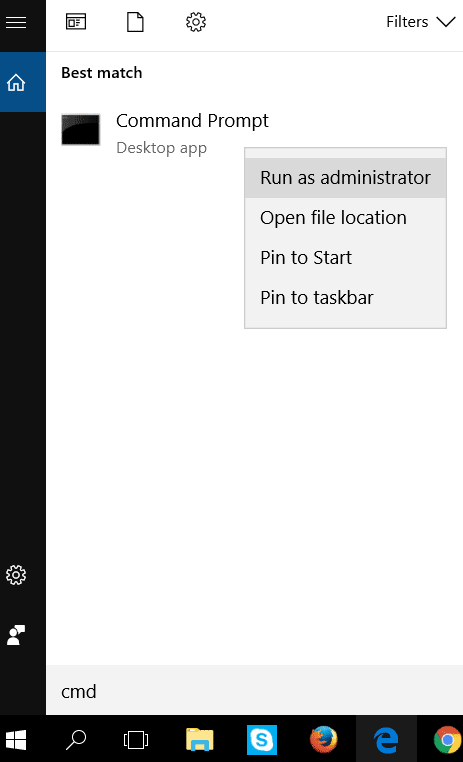

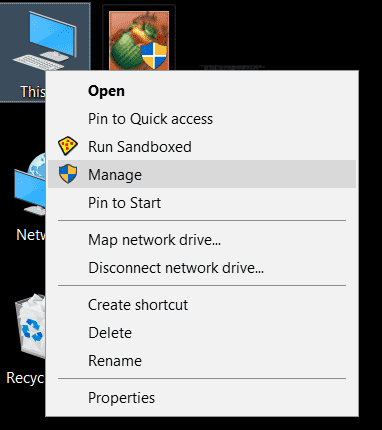
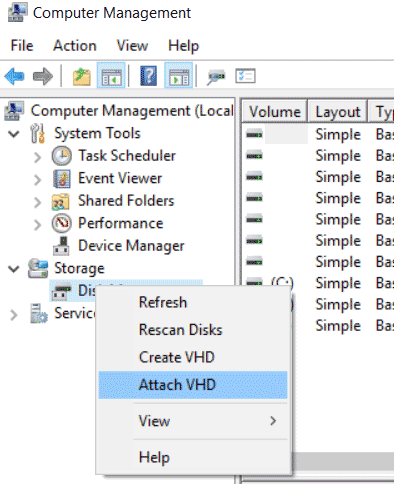
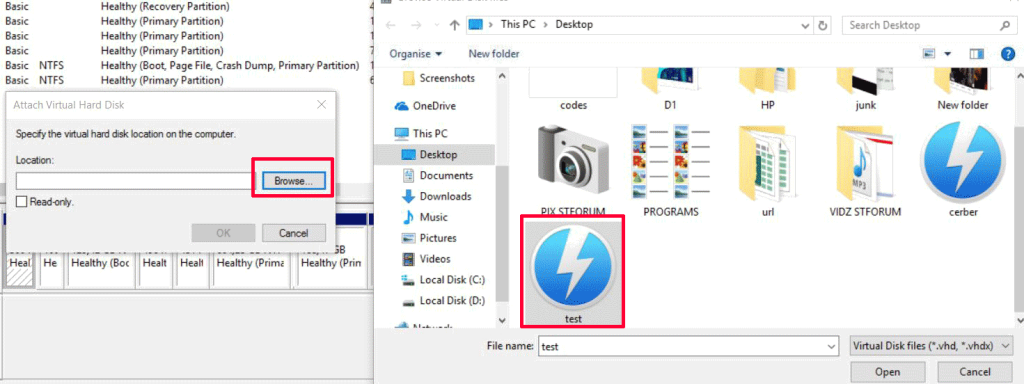
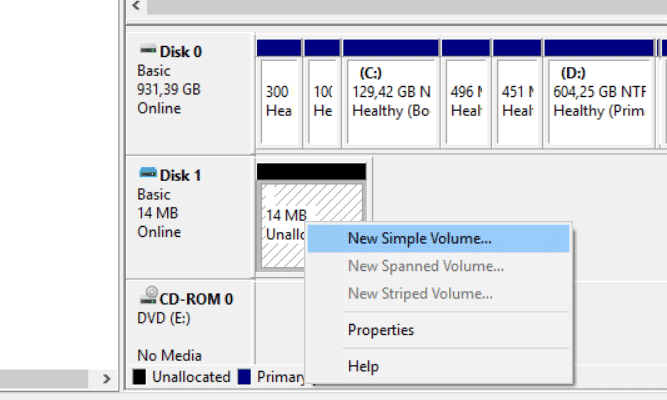
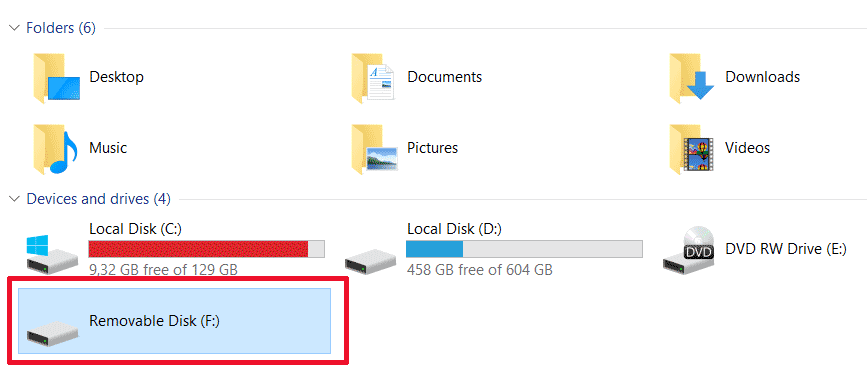


We have a client that was recently hit by the DHARMA strain. (accounts server) The issue that we have is how it managed to get through a very tight security platform.
We locked Accounts down and removed Administrator privileges. In addition the “Host” that was infected does not have a mail account. We also have a multi vectored security platform that is linked to the cloud (17 best of breed AV’S that scan mail / web and endpoint protection). Which fortunately stopped it half way through the encryption. (But is is still 300Gb that needed to be restored)
Recently we opened up RDP for a 3rd party vendor to run updates on their platform. They then got hit…
(The 3rd party company run’s updates for 100s corporate clients – and are adamant that it is not from their side as other sites would be affected).
My query is – how does this infection then get in? The server (2012 R2) was recently formatted and reloaded – all patches up to date, is behind a firewall, is not internet or mail facing and we have a proven solid security platform)
RDP? Brute force attack… some kind of BOT?
No other unit has the payload on the network.
Is very odd… any input will be appreciated… Thanks
You could theoretically use a network sniffer to intercept any POST communication related to Dharma, but for this you have to know the remote server it connects to and for this you have to have the malicious payload of the virus which should contain the IP or host of the C2 server in it. Then you may add it as a fiter in Wireshark and reinfect a test PC or if you have an infected computer, make Wireshark run on startup and intercept any traffic or communication packets. Below we have a theoretical tutorial on how to run wireshark on startup and how to try and detect information in packets, so feel free to help yourself. Bear in mind that you have to be infected with the thing to try this and it is only theoretical, meaning that it may or may not work, because the virus may send the information via encrypted packages or encrypt the decryption key on your computer and send it afterwards.
ask.wireshark.org/questions/26932/capture-packets-on-startup-automatically – run wireshark automatically on startup
sensorstechforum.com/use-wireshark-decrypt-ransomware-files/ – usage of wireshark
I have just seen a site where I have identified RDP as the means of entry for two separate attacks. In both cases generic test accounts with an easily guessable password (hint, the user accounts are test accounts in a school). I would check, and double check that your RDP access is only allowed to specific real users, and not across the board to any domain admins and test accounts, Make sure these accounts have good passwords. Plus, ideally, do not publish RDP on it’s default port of 3389. At least change this to a different port, or better still put in a web gateway to access it.
Take a look at a page like security.berkeley.edu/resources/best-practices-how-articles/securing-remote-desktop-rdp-system-administrators for more info on securing RDP.
My next step is going to be installing App Locker on the RDP boxes to ensure that no malware can run.
NB. If you look at the owner of the files you can find out what account was infected and caused the file encryption.
few days ago I was infected by the virus of the ransom “ramsonware dharma” with the extension wallet at the end, and email dell’haker at the beginning.
fly_goods@aol.com.wallet
this ramsonware encrypt all my pc file.
He came out the tool to decrypt the files?
I formatted the PC and restored with copies but some important files have not succeeded because encrypted.
can someone help me. thank you so much. good day
There is still no decryptor tool available and decryption may not be possible.
Ok thanks Berta for your reply
any decrypt ?
ramsonware dharma
Hi there
I have pdf files encrypted and the extension fo the files became 46FAC392.[mk.scorpion@aol.com].wallet how can i fix this
thanks